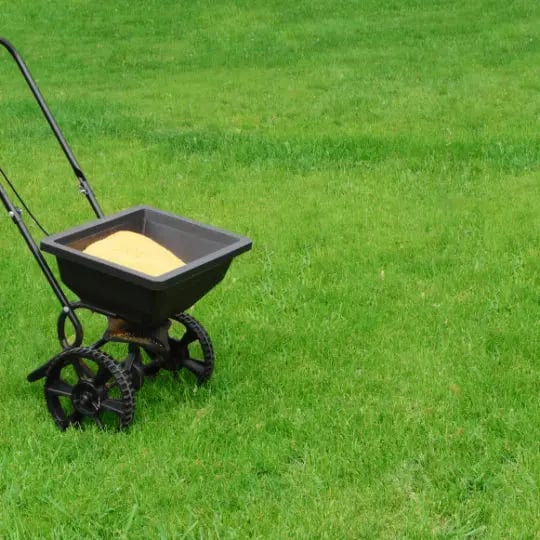How to Get Green Grass

The grass is always greener, they say. Making your lawn the envy of town is easy with the correct maintenance techniques. Read on to learn how to get your grass the lush, deep-green color you crave.
Find the proper grass seed for your area: It’s wise to use a mixture of seeds when planting your lawn to ensure it can survive various conditions. Make sure that the seeds you use are climate-appropriate for your area. Depending on where you live, a “warm season” or “cool season” mix might be suitable. Consult your neighborhood gardening center for advice about your local environment.
- Water: Water your grass regularly in order to avoid shallow roots and discoloration. Overwatering can cause disease and fungus, so it is best to judge how often you water by observing the color and how fast the blades bounce back after walking on it. When grass takes on a blue-gray tint or remains flat after absorbing a foot print, it’s time to water. Consistently dry conditions can require more frequent watering. Be sure to water in the morning so that the grass blades have time to dry in the afternoon sun. This prevents mildew and mold.
- Test pH levels: Grass won’t thrive in soil too acidic or rich in alkaline. Collect one tablespoon-size sample a couple of inches below the surface in three different places in your yard and take them in for testing at a nursery that offers soil-testing services. The ideal pH is between 6 and 7.2. If the pH is too high, treat the lawn with iron sulfate or sulphur. If it’s too low, use pelletized limestone. Apply both treatments to your lawn with a spreader.
- Fertilize: An effective fertilizer should contain nitrogen, potassium, and phosphorous. The first macronutrient, nitrogen, is vital to attaining green grass. Keep in mind that a larger amount of nitrogen will result in a greener lawn. Apply fertilizer to your lawn multiple times throughout the growing season.
- Mow: Avoid bald, discolored spots by mowing your lawn when it’s dry using a sharpened mower. The grass should stand 3” to 3-1/2” tall. Never cut it shorter than 2” to 2-1/2” inches or leave it longer than 3” high. Alternate mowing directions to avoid clippings piling up too high.
- Leave the grass clippings: The valuable nutrients in the grass clippings can do your lawn some good, left right where they lie after cutting (about ½” high), assuming you are using a proper mowing height to ensure that the bulk of the grass is kept to a minimum. Although this method means mowing more frequently, it will ultimately result in a healthier, more nourished lawn.
For further assistance in keeping your grass gorgeous and green, call Green Lawn Fertilizing at 855-469-0692. We’re here to help you achieve a beautiful yard. Call us today for more tips and tricks to keep your lawn looking its best.